#De Occulta Philosophia
Text
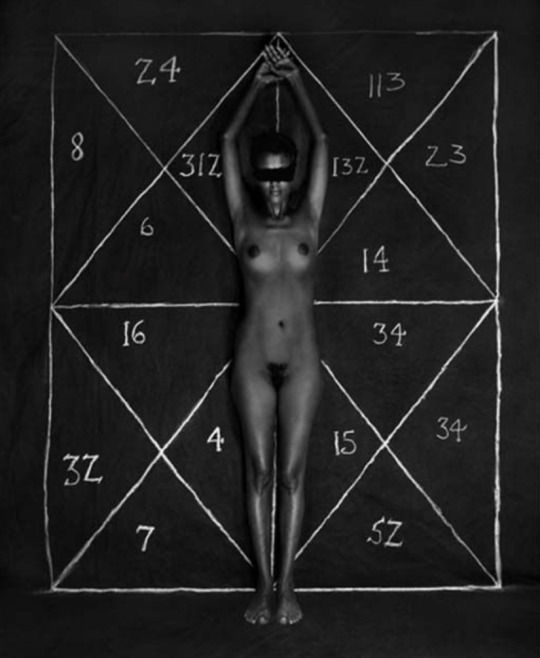
Photography by Flor Garduño
#Flor Garduño#artistic nude#art nude#photographic nude#Agrippa von Nettesheim#De occulta philosophia
47 notes
·
View notes
Photo

Charles Simic, De Occulta Philosophia
2 notes
·
View notes
Photo
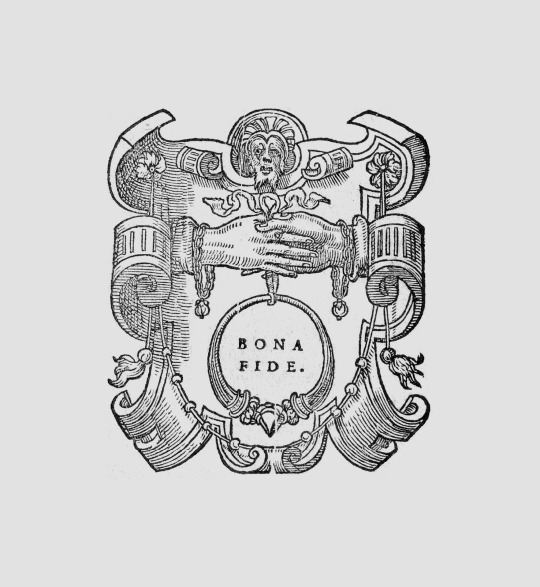
From “De occulta philosophia libri III” c.1550
#hermetica#henricus cornelius agrippa#de occulta philosophia#lyon#rosenberger#Hieronymus Christophorus Augustanus#Ambrosius Hoferius Torgensis#walter pagel#ex libris mythicus
4 notes
·
View notes
Quote
In like manner a wise man testified concerning himself that on all sides sparkling flames issued from his body, accompanied even by noise.
Heinrich Cornelius Agrippa, De Occulta Philosophia
#Quotes#Wisdom#Heinrich Cornelius Agrippa#De Occulta Philosophia#Children of the Sun#The World of Astral Fire
3 notes
·
View notes
Text
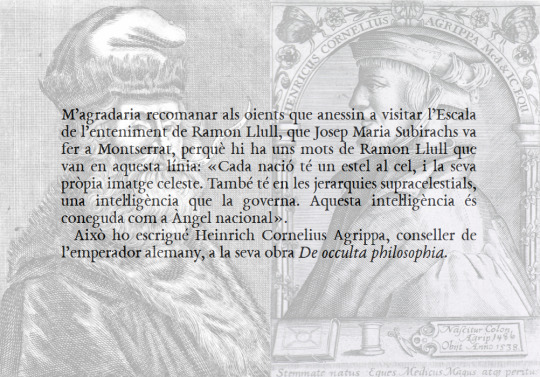
"M’agradaria recomanar de visitar l’Escala de l’enteniment de Ramon Llull, que Josep Maria Subirachs va fer a Montserrat, perquè hi ha uns mots de Ramon Llull que van en aquesta línia: «Cada nació té un estel al cel, i la seva pròpia imatge celeste. També té en les jerarquies supracelestials, una inteŀligència que la governa. Aquesta inteŀligència és coneguda com a Àngel nacional»."
Això ho escrigué Heinrich Cornelius Agrippa, conseller de l’emperador alemany, a la seva obra De occulta philosophia.
~Jordi Salat~
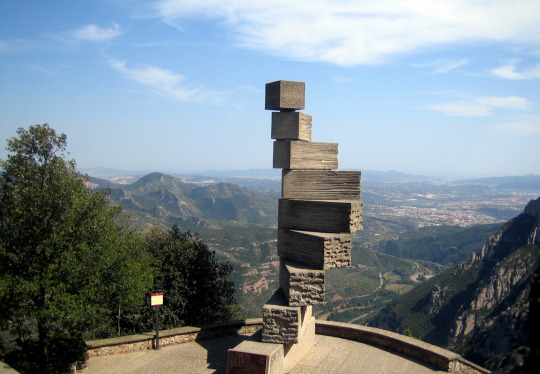


#Ramon Llull#Heinrich Cornelius Agrippa#Jordi Salat#vernaclisme#Catalunya#catalans#Occitània#occitans#De occulta philosophia#Montserrat#Escala de l'enteniment#Josep Maria Subirachs#1304#1076#2021
1 note
·
View note
Note
ct. you know many thimgs. can you teach me what a "prostate orgasm" is & how to get one
So back in the middle ages, many magicians felt that the world was primarily ruled astrologically. The planets, the moon and the sun, and signs of the zodiac, were all a sort of heavenly language that God used to administer the world.
The evidence for this was the similarities of things. The sign of cancer looked like a crab, therefore it ruled over crabs, and all things like crabs. So the sign of cancer was connected in some way to any thing reclusive, hard-shelled, furtive, and self-reliant. This idea, that the star signs and planets are connected to qualities on earth, is known as "The Doctrine of Signatures."
This extends to the body! Check out this image from De Occulta Philosophia, in which Agrippa shows which star signs rule over which elements of the body.
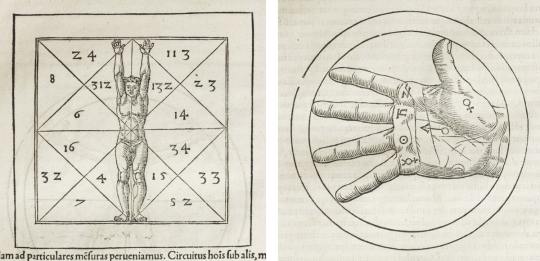
(yes that diagram on the left is what horoscope charts used to look like.)
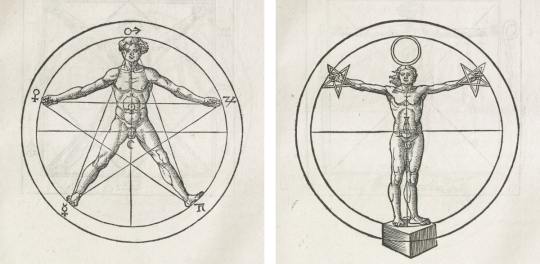
This diagram is from the 1500s. Take note of the planetary associations on the left here. The core of the body is associated with the sun, but the genitals, the genitals are lunar. (Because they ebb and flow like the tides as they get excited.)
Humorously, but also as significant magical commentary, Alieststair Crowley would extend this conception of the Magical Solar Internal Core of the body to the idea that the butthole was therefore also solar in nature. This was both simply a logical extension of Agrippas magical theories, and a clever jab at traditional religious institutions. (The Christian god is often considered astrally solar in nature.)
He combined this with alchemical doctrine --in which the uniting of the sun and moon is popular imagery-- and came to the conclusion that penis-in-butthole sex was one of the most magically potent things a person could do.
3K notes
·
View notes
Text
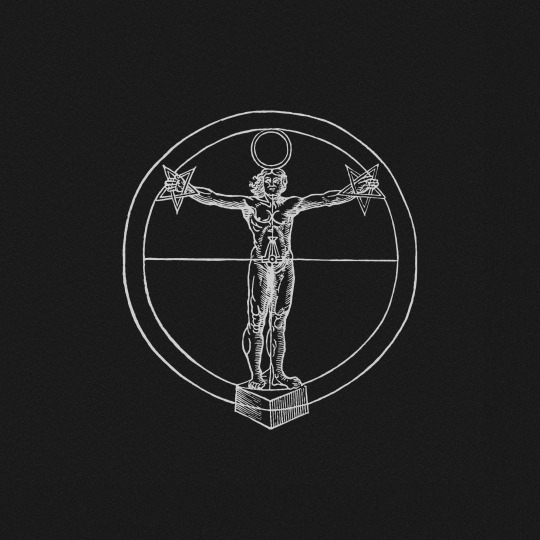
Diagram from Agrippa’s De occulta philosophia (1533) demonstrating the proportion, measure, and harmony of human bodies. The diagram occurs during a discussion of how Noah framed his ark according to the measure of human bodies
The magus could trace lines of influence upward along the great celestial power grid of the universe and downward into every order of being on earth:
All the stars have their own natures, properties, and conditions, and through their rays, they also produce signs and characters in inferior beings as well, in the elements, in stones, in plants, in animals and their members. Therefore each thing receives from its harmonic disposition and its star that irradiates it a certain special sign or character, which is stamped on it, which refers distinctively to that star or harmony, and has a power differing from all the rest either in genus, or species, or number of the preexisting material. Thus each thing has its mark, for some special effect, stamped on it by its star.
Marked by Stars Agrippa’s Occult Philosophy
By Anthony Grafton
57 notes
·
View notes
Text
So how did we get from this
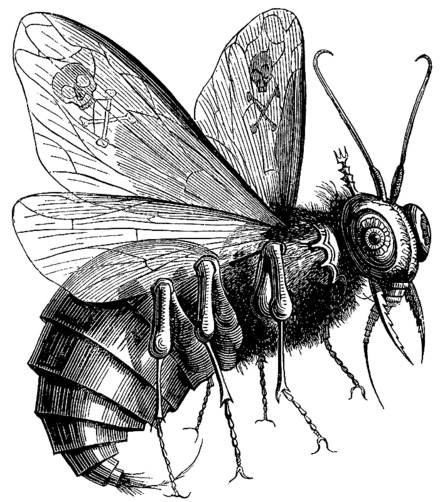
To this?

Let's talk about the history of Beelzebub!
Beelzebub is strongly associated and indeed often conflated with Baal, a Hellenistic era pagan god worshipped everywhere from the Canaanite city of Ekron to Greece (where he was known as Belus) to Egypt as far back as 1400 BCE. He is first mentioned in the Books of Kings (2 Kings 1:2–3, 6, 16) as Ba'al-zəbûb, meaning "Lord of the Flies" in Hebrew, a possible corruption of "Lord of the High Place" meant to denigrate the deity after he was appropriated and repurposed as a false god, then a demon. Baal worship was extremely difficult for the early Christians to stamp out, so they basically stole other people's mythology and used it as a free idea bucket to fill out the Bible's rogues gallery.
While it's true that in some Ugaritic texts, Baal is depicted as expelling flies and causing sickness, he was still held in high esteem in ancient Canaan and Phoenicia as a powerful deity who controlled the sun, storms, and fertility and who defeated Mot, the god of death and the underworld. The ancient world could get pretty scatological at times! After all, one of Beelzebub's contemporaries, the Egyptian sun god Ra, was often depicted as a dung beetle, then a prominent symbol of rebirth.
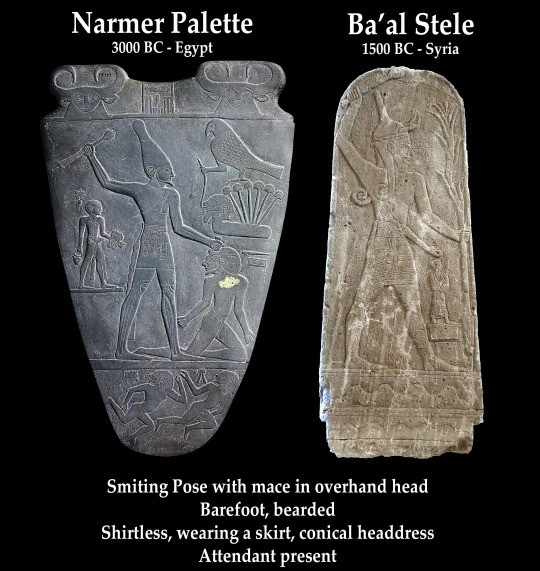
Some scholars think he might have even been the same god! Beelzebub seems to have been the ancient world's go-to demon because the name has been used interchangeably with everyone from Lucifer, Satan, and even Hades in some gnostic texts.
Unfortunately, we don't have much information about Beelzebub's pre-Christian origins other than some iron age ruins in what is now modern day Israel that suggest his temples were decorated with little golden flies, which is pretty neat.
Interestingly, Jesus himself was accused of being a worshipper of Beelzebub multiple times in the New Testament. Maybe the Pharisees were projecting?

Throughout the Middle Ages, Beelzebub reappeared again in the Lantern of the Light (where he was associated with the sin of envy), De Occulta Philosophia, Princes of Hell, and other demonology texts. 16th-17th Century French Inquisitor Sébastien Michaelis elevated him to the rank of fallen angel in his book The Admirable History of Possession and Conversion of a Penitent Woman: Seduced by a Magician that Made Her to Become a Witch, translated to English in 1613. It was around this time Beelzebub started to become strongly associated with witchcraft. Michaelis should know; he burnt over 14 women accused of being witches!
Unsurprisingly, his name came up repeatedly during the Salem witch trials.
Beelzebub and fellow demons new and old bounced all over different classifications of demons during the 1500s and 1600s. In John Milton's epic poem Paradise Lost, first published in 1667, Beelzebub was part of an unholy trinity consisting of him, Lucifer, and Astaroth. Occultist Johan Weyer decreed that Beelzebub was the Emperor of Hell, having led a successful revolt against the devil. German theologian Peter Binsfield described him as the Prince of Gluttony in his 1589 Treatise on Confessions by Evildoers and Witches. Before that, he was associated with Envy, then Pride.
We even have his personal signature! (At least according to the Grand Grimoir, an anonymous text on black magic of unknown origin)

Beelzebub's physical appearance is even more diverse. He's been depicted as everything from a leopard, a feminine man as tall as a tower, a snake, a calf with a fly's face to...whatever the literal hell this is:
"'dressed like a bee and with two dreadful ears and his hair painted in all colors with a dragon's tail"


Jacques Albin Simon Collin de Plancy (1793 – 1881)'s Dictionnaire infernal was among the first to depict Beelzebub literally as a fly. No duck feet, no lion's mane. Just a fly.
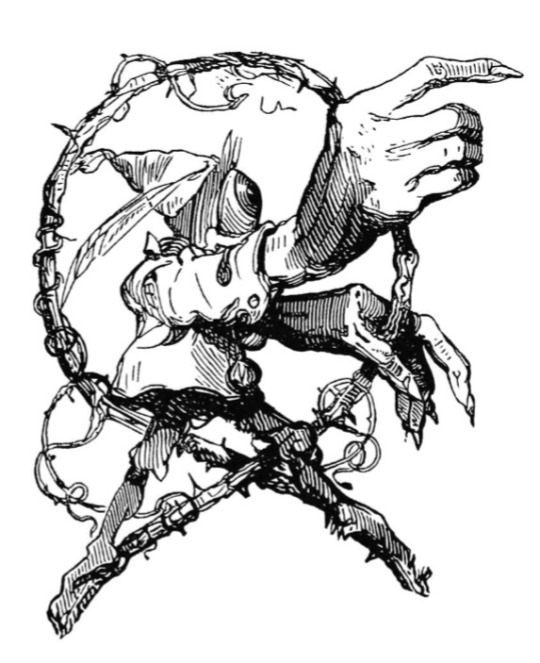
Still better than this.
As Plancy was a skeptic influenced by Voltaire, the book was first intended as a folklore compilation but was later modified to fit with Roman Catholic theology after he converted, much to the consternation of his admirers. Many of his lurid illustrations later appeared in S. L. MacGregor Mathers's edition of The Lesser Key of Solomon...for better or for worse.

Put Adrammelech in Helluva Boss you cowards.
So basically, Beelzebub has been a public domain character since before King Tut was laid in his golden sarcophagus, and people have been just making shit up about him for millennia. What's your favorite depictation of Beelzebub? This is mine:

Nothing beats 2nd Edition Dungeons & Dragons artwork.
#helluva boss#queen bee#beelzebub#character design#meta#demonology#history#mythology#long post#vivziepop#dandelion watches hellaverse#religion
36 notes
·
View notes
Text
Azazel
The name Azazel only occurs one time in all of the canonical Bible, in Leviticus 16:8-10. As the Catholic Encyclopedia records, this passage explains the ceremony that the Jewish people should perform as part of Yom Kippur, the Day of Atonement.
As a personification of evil, the Jewish Encyclopedia refers to Azazel as "in some degree a preparation" for the idea of Satan. The figure of Azazel is likely pre-Israelite in origin and is probably closely tied to a communal fear for the mountainous desert region that he came to personify.
According to the Nahmanides the scapegoat rite is a symbolic expression of the idea that the people's sins and their evil consequences were to be sent back to the spirit of desolation and ruin, the source of all impurity.
1 Enoch portrays Azazel as responsible for teaching people to make weapons and cosmetics, for which he was cast out of heaven.
In the extra-canonical text the Apocalypse of Abraham (c.1st CE), Azazel appears as an unclean bird who came down upon the sacrifice which Abraham prepared. (This is in reference to Genesis 15:11: "Birds of prey came down on the carcasses, but Abram drove them away" [NIV]).
In the Apocalypse of Abraham, Azazel is described with his own Kavod (Magnificence), a term usually used for the Divine in apocalyptic literature, already indicating the devil as anti-thesis of God, with the devil's kingdom on earth and God's kingdom in heaven. Azazel is also identified with the serpent which tempted Eve.
In De occulta philosophia (1509-1510), Heinrich Cornelius Agrippa: Scale of quaternary: Four Princes of devils in the elements: Azazel: Air
In later lore, he is fallen and is punished by having his nose pierced.
The word "scapegoat" has developed to indicate a person who is blamed and punished for the actions of others.

The illustration depicts him with horns, a pitchfork, a banner, and, of course, a goat. There's a frog on the banner. From Dictionnaire Infernal by Jacques Auguste Simon Collin de Plancy
Alternative Spellings
Hebrew: עֲזָאזֵל ʿAzāʾzēl
Arabic: عزازيل, romanized: ʿAzāzīl
Asael
Azael
Azazyel
Azzael
Epithets
The Adversary
Advisor
The Angel of Darkness
Blender of Eyeshadows
Counselor
The Crafty Adversary
The Crafty Worm
The Cunning Worm
The Fallen Archangel
Forger of Swords
Guardian of Goats
The Lawless One
The Rebel Angel
Seducer of Mankind
Identified With
The Devil
[Apocalypse of Abraham] Here there is the idea that God's heritage (the created world) is largely under the dominion of evil – i.e., it is "shared with Azazel" (Abr. 20:5), again identifying him with the devil, who was called "the prince of this world" by Jesus. (John 12:31 niv)
Gadriel and Rameel
Some of the fallen angels that are given in 1 Enoch have other names, such as Rameel ('morning of God'), who becomes Azazel, and is also called Gadriel ('wall of God') in Chapter 68. (A source is not cited for this)
Gadreel (Hebrew: גדר האל, romanized: Gader ha-el, lit. 'Wall of God') is listed as one of the chiefs of the fallen Watchers. He is said to have been responsible for deceiving Eve. Schmidt lists the name as meaning 'the helper of God.'
Iblis
In Islamic lore, Azazel or Azazeel was the name of Iblis before he disobeyed God by not bowing to humans and was sent from the Earth.
Satan
Origen ("Contra Celsum," vi. 43) identifies Azazel with Satan.
Azaz, as in Azazel, means strength, so the name Azazel can refer to 'strength of God'. But the sense in which it is used most probably means 'impudent' (showing strength towards), which results in 'arrogant to God'. This is also a key point in modern thought that Azazel is Satan. Also important in this identification is the fact that the original name Rameel, is very similar in meaning to the word Lucifer ('Morning Star') which is a common Latin name of Satan in Christianity.
Associated With
Alchemy
Antimony (use of)
Beauty
Coloring tinctures
Cosmetics
Cunning
The earthly realm
Fatherhood
Forbidden knowledge
Freedom of choice
Goats
Dye making
Herbalism
Knowledge
Magic
Marriage
Metallurgy
Metalworking
Mirror making
Occult arts
Ornamenting the body
Pleasure
Pride
Rebellion
Scapegoats
Seduction
Self preservation
Sensual experiences
Sexuality
Temptation
Warfare
Weapon making
Wisdom
Witchcraft
Attributes
Abyss, hole, pit
Air
Antimony
Banner with a frog on it
Black
Bracelets
Breastplates
Chain
Coats of mail
Cosmetics
Darkness
Desert
Dragon
Dudael, Dûdâêl (God's Kettle/Crucible/Cauldron)
Dye
Fallen/falling star
Fire
Goat, goat skulls, goat bones
Grapes, grapevine
Herbs
Jewelry
Knives
Metals
Metalsmithing tools
Mirror
Mount Azazel (Jabel Munttar) in the Judaen Desert
Nose piercing
Precious stones
Red
Rough and jagged rocks
Serpent
Shields
Swords
Unclean bird, bird of prey, carrion bird
Uninhabited places
Weapons
Wilderness
Depictions
His form is described as a dragon with "hands and feet like a man's, on his back six wings on the right and six on the left." (23:7)
Originally, Azazel was one of heaven’s angels, a gloriously beautiful man with wings on his back.
Today, like many demons, Azazel is drawn with red skin, glowing yellow eyes, and a barbed tail. He may also be found wearing goat skulls or dressed in goat bones.
He is a shape-shifter and may appear in any form, including a winged angel.
An unclean bird, bird of prey, carrion bird
184 notes
·
View notes
Text
imagine young victor demanding to be read ancient alchemy as a bedtime story. caroline begrudgingly sitting down to read her son his nightly chapter of de occulta philosophiae
#rob.txt#frankenstein the modern prometheus#frankenstein#victor frankenstein#gothic lit#classic lit#im aware he kept his readings a secret#but alas
112 notes
·
View notes
Text
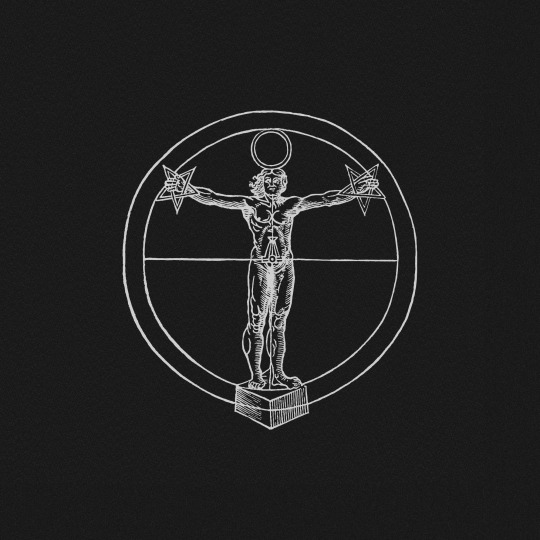
Diagram from Agrippa’s De occulta philosophia (1533) demonstrating the proportion, measure, and harmony of human bodies. The diagram occurs during a discussion of how Noah framed his ark according to the measure of human bodies
The magus could trace lines of influence upward along the great celestial power grid of the universe and downward into every order of being on earth:
All the stars have their own natures, properties, and conditions, and through their rays, they also produce signs and characters in inferior beings as well, in the elements, in stones, in plants, in animals and their members. Therefore each thing receives from its harmonic disposition and its star that irradiates it a certain special sign or character, which is stamped on it, which refers distinctively to that star or harmony, and has a power differing from all the rest either in genus, or species, or number of the preexisting material. Thus each thing has its mark, for some special effect, stamped on it by its star.
Marked by Stars Agrippa’s Occult Philosophy
By Anthony Grafton
11 notes
·
View notes
Text
BASIL seems to be connected to the number “2”
“The number 2 symbolizes many of the basic dualities: me/you, male/female, yes/no, alive/dead, left/right, yin/yang, and so on. Dualities are common in human approaches to the world, probably because of our preference for two-valued logic—yet another duality, true/false. Although 2 was female to the Pythagoreans, other numerological schemes viewed it as male. In Agrippa von Nettesheim’s De occulta philosophia (1533; “On the Philosophy of the Occult”), 2 is the symbol for man, sex, and evil. One reason that some have associated 2 with evil is that the biblical book of Genesis does not use the formula “and it was good” when referring to the second day of Creation.
Some religions are dualistic, with two gods in place of the one God of monotheism. Examples include Zoroastrianism, where Ahura Mazdā (the god of light and goodness) battles with Ahriman (the god of darkness and evil). The number 2 is often associated with negatives, as in the words duplicity and two-faced. Northwest Coast Indians required the parents of twins to observe various taboos because they believed that supernatural powers would bring the wishes of twins to fruition.”*
BASIL’S CHARACTER
BASIL’s morality, and character as a whole, seems to be neither black, nor white, but gray. Let me explain in three parts. (Although second part is kind of lacking.)
BASIL’S ACTIONS
For here, I understand his actions, and could definitely see myself doing what he did “But he could’ve found a better way to frame MARI’s death!!” While yes, I could agree and understand the reasoning behind saying that, you also have to understand that he didn’t know what to do and at that time there was probably something wrong happening with him that he never bothered to tell anyone, even SUNNY, and thus leading him to resort to what he did. He was basically put into a high amount of stress, where felt like he’d be selfish to leave SUNNY like that, and so he chose to do what he did.
Regarding BASIL’s fight, in my point of view, it was him lashing out at SUNNY due to his bottled up emotions finally spilling, and his abandonment issues getting the better of him (I think from the start of when SUNNY came back, it started to get the better of him, as SUNNY was just moving in 3 days). Add this to the fact that he was just about to kill himself—as implied by the neutral/worst endings of OMORI—and you’ll really start understand his actions.
To summarize this section, it’s basically an explanation on his actions, and why they’re neither right nor wrong.
His “vibes”
He can give off a kind and happy vibe, but also give off a mean and depressed one.
Things I’ve noticed
For this, a thing i’ve noticed about BASIL is how connected to “two” he is, without even having something like OMORI, at least, not in the canon OMORI game. The contrast between HS!BASIL and RW!BASIL (and/or STRANGER). The way he’s the only other one (the second one) to wear a vest and shorts (first one being SUNNY). The way gardening shears have two blades instead of one blade like the knife, and the way some flowers, such as roses have thorny sides. “B” is also the second letter of the alphabet. BASIL also does not look as “gendered” as other OMORI characters. Like with characters such as SUNNY, HERO, MARI, AUBREY, and even KEL, you can tell what gender they are by their looks and/or vibes, but for BASIL, he seems to be gender neutral. (omg agender BASIL canon?1.1?q /j).
To summarize this section, it’s basically me noticing a recurring theme with BASIL, and how he’s associated with 2. I can’t explain this one well, so you’ll actually have to read this
QUOTE AT THE START TAKEN FROM:
#omori#omori basil#basil omori#omori analysis#basil (me) rants about basil from omori OMORI#i love him a lot#omori character analysis#character analysis#ALSO ALSO FUN FACT BASIL’S THE 4TH FRIEND THAT SUNNY AND MARI MET#4 IN JP AND CN SOUND LIKE THE WORDS FOR DEATH IN THEIR RESPECTIVE LANGAUGES#2X2 IS ALSO 4
41 notes
·
View notes
Photo

(vía Marked by Stars: Agrippa’s Occult Philosophy – The Public Domain Review)
Two diagrams from Agrippa’s De occulta philosophia (1533) demonstrating the proportion, measure, and harmony of human bodies.
5 notes
·
View notes
Text
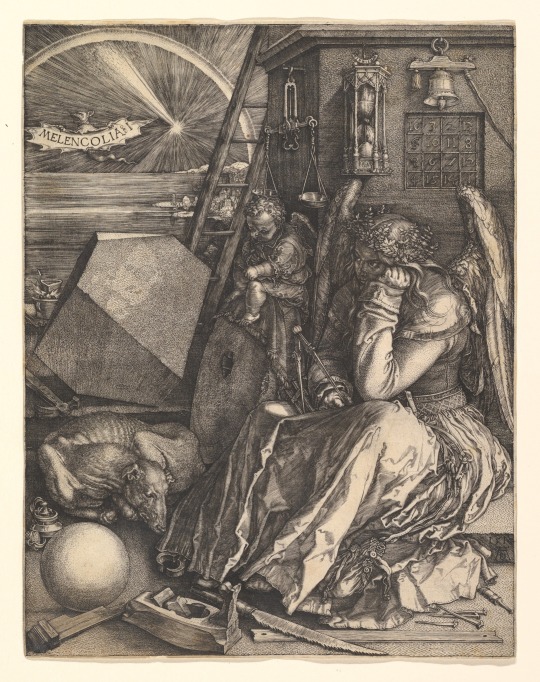
Melencolia I (1514) Albrecht Dürer
Dürer's Melencolia I is one of three large prints of 1513 and 1514 known as his Meisterstiche (master engravings). The other two are Knight, Death, and the Devil and Saint Jerome in His Study. The three are in no way a series, but they do correspond to the three kinds of virtue in medieval scholasticism--moral, theological, and intellectual--and they embody the complexity of Dürer's thought and that of his age.
Melencolia I is a depiction of the intellectual situation of the artist and is thus, by extension, a spiritual self-portrait of Dürer. In medieval philosophy each individual was thought to be dominated by one of the four humors; melancholy, associated with glack gall, was the least desirable of the four, and melancholics were considered the most likely to succumb to insanity. Renaissance thought, however, also linked melancholy with creative genius; thus, at the same time that this idea changed the status of this humor, it made the self-conscious artist aware that his gift came with terrible risks.
The winged personification of Melancholy, seated dejectedly with her head resting on her hand, holds a caliper and is surrounded by other tools associated with geometry, the one of the seven liberal arts that underlies artistic creation--and the one through which Dürer, probably more than most artists, hoped to approach perfection in his own work. An influential treatise, the De Occulta Philosophia of Cornelius Agrippa of Nettesheim, almost certainly known to Dürer, probably holds the explanation for the number I in the title: creativity in the arts was the realm of the imagination, considered the first and lowest in the hierarchy of the three categories of genius. The next was the realm of reason, and the highest the realm of spirit. It is ironic that this image of the artist paralyzed and powerless exemplifies Dürer's own artistic power at its superlative height.
Source
16 notes
·
View notes
Text
Did you know that some of Agrippa's "The Philosophy of Natural Magic" texts are on Sacred-texts?
Here's their description of it: This is an early 20th century edition of Agrippa's Philosophy of Natural Magic, along with a wealth of background material. Originally published in 1531-3, De occulta philosophia libri tres, (Three books of Occult Philosophy) proposed that magic existed, and it could be studied and used by devout Christians, as it was derived from God, not the Devil. Agrippa had a huge influence on Renaissance esoteric philosophers, particularly Giordano Bruno.
10 notes
·
View notes
Text

"I say to you that I am the thing itself, but you must not touch me; within me lies the seed of all animals, herbs and ores." (Conversation between Saturn and a chemist, Frankfurt, 1706)
Once Cronus-Saturn was the proud ruler in the eternally youthful "Golden Age", but since his son Jupiter overthrew him and he, according to the Iliad was, "put under the earth", he is in a pitiful condition: now as Father Death, with his sickle in his hand, he now embodies the destructive aspect of time, and represents the original "gate of darkness" in the 'Work of becoming' through which material must pass "in order to be renewed in the light of paradise". The lowest and coarsest level, the sediment of the world edifice, is assigned to him: stones, earth and lead (antimony). Böhme called him "the cold, sharp and strict, astringent ruler", who created the material skeleton of the world. The influences of his planet were held responsible for all kinds of poverty and misery.
For the Neoplatonists, however, he rose "to become the most sublime figure in a philosophically interpreted pantheon". According to Plotinus, he symbolizes the pure spirit, and Agrippa von Nettesheim (1486-1535) referred to him as "a great, wise and understanding lord, the begetter of silent contemplation" and a "keeper and discoverer of mysteries" (De occulta philosophia, 1510). In this way, he rose to become the patron of the alchemists, and at times their central role model.
"Behold, in Saturn a Gold lies enclosed (...). Just so man lies now, after his fall, in a great, formless, bestial, dead likeness (...) He is like the coarse stone in Saturn (...) the outer body is a stinking cadaver, because it still lives in poison." (Jacob Böhme, De signatura rerum) -continued-
"Therein lies the most evil poison of all (...) and an earthly treasure and an earthly God in whose hands lies the spiritual and earthly law, and who has the whole World in his hand."
So
Take the wolf, the child of Saturn (..) and throw him the body of the King. And when he has swallowed him, build a big fire and throw the Wolf into it, so that he burns up, and then the King will be liberated again.” (Basil Valentine, Twelve Keys)
2 notes
·
View notes